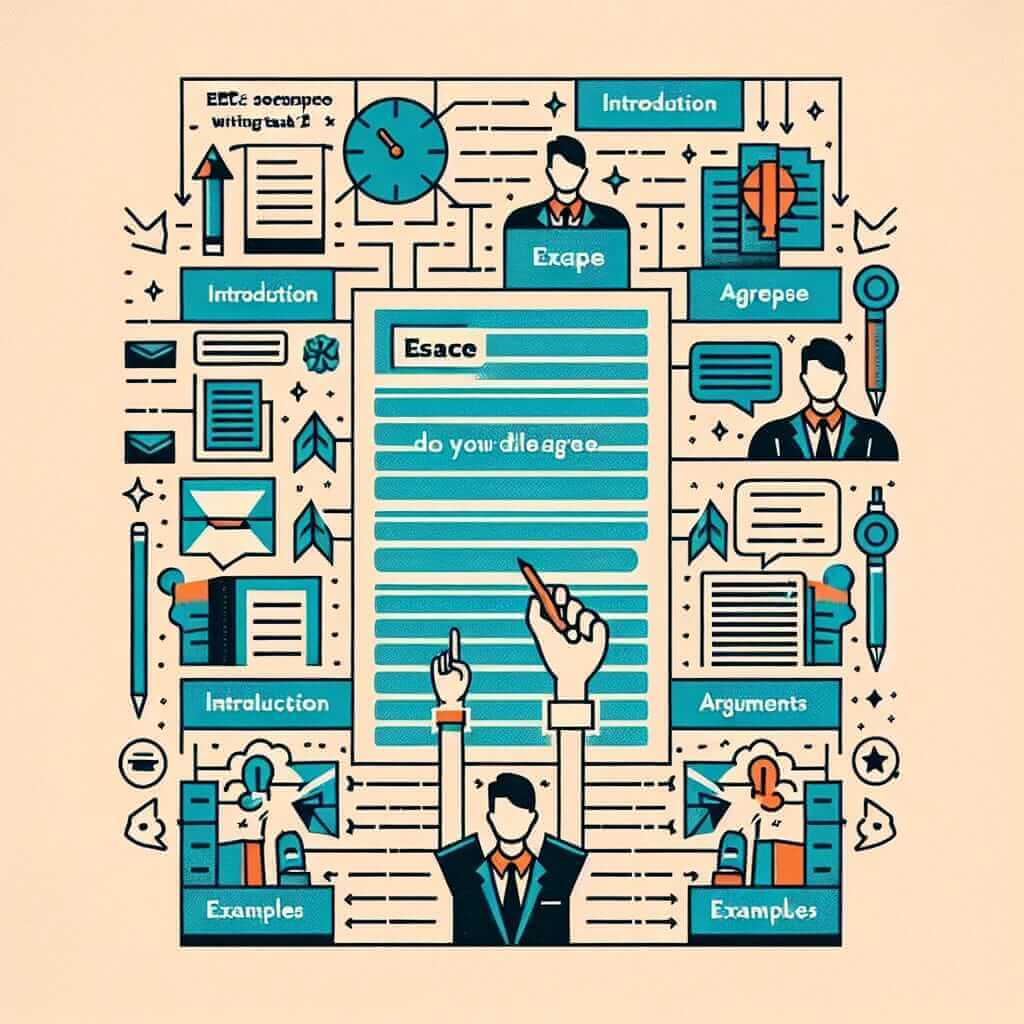“To what extent do you agree or disagree?” This phrase strikes fear into the hearts of many IELTS test-takers. It signals an essay demanding a nuanced understanding of a topic and the ability to present a well-structured, reasoned argument. But fear not, aspiring IELTS achievers! This guide will equip you with the knowledge and strategies to confidently tackle “to what extent” essays and boost your IELTS Writing score.
Understanding “To What Extent” Essays
In these essays, you’re presented with a statement and asked to assess the degree to which you agree or disagree. Unlike a simple agree/disagree essay, a “to what extent” essay requires you to explore the complexities of the issue and acknowledge varying perspectives.
Why is this essay type important for IELTS?
The “to what extent” essay tests your ability to:
- Analyze an issue critically: You must dissect the prompt, identifying its key components and potential arguments.
- Formulate a balanced argument: Acknowledging both sides of the argument is crucial, even if your opinion leans one way.
- Present a clear and logical argument: Your stance should be supported by relevant examples and coherent reasoning.
Crafting Your “To What Extent” Essay
Here’s a step-by-step breakdown to help you construct a high-scoring essay:
1. Analyze the Question
Carefully read the prompt and underline keywords. For example, let’s consider this prompt:
“Some people believe that technology has made our lives more stressful. To what extent do you agree or disagree?”
Keywords: technology, stressful, agree/disagree, to what extent
Determine your stance. Do you completely agree, partially agree, or disagree? Your essay will be structured around your chosen stance.
2. Plan Your Essay
Create a brief outline. This will help you organize your thoughts logically. A typical structure:
- Introduction: Introduce the topic, paraphrase the question, and clearly state your stance.
- Body Paragraph 1: Present your main argument supporting your stance with relevant examples.
- Body Paragraph 2: Acknowledge the opposing viewpoint and provide counter-arguments. This shows you have considered different perspectives.
- Conclusion: Summarize your main points and restate your position in a clear and concise manner.
3. Write a Strong Introduction
Engage the reader with a hook. This could be a general statement about the topic or a rhetorical question.
Paraphrase the question. Demonstrate your understanding of the prompt using different words.
State your thesis statement. This is your overall stance on the issue. Be clear and concise.
Example Introduction:
In today’s rapidly evolving world, technology has become an indispensable part of our lives. While it offers undeniable conveniences, some argue that its proliferation has led to increased stress levels. While I acknowledge that technology can contribute to stress, I believe its benefits far outweigh this drawback.
4. Develop Your Body Paragraphs
Use topic sentences. Clearly state the main point of each paragraph.
Provide evidence and examples. Support your arguments with relevant and specific examples.
Use transition words and phrases. Ensure a smooth flow between ideas and paragraphs (e.g., however, furthermore, in contrast).
Example Body Paragraph:
One of the primary reasons I believe technology reduces stress is its ability to simplify daily tasks. For instance, online banking and shopping platforms eliminate the need for physical errands, saving time and effort. Furthermore, communication tools like email and instant messaging enable us to connect with others instantly, reducing the stress of missed calls or delayed responses.
5. Craft a Persuasive Conclusion
Summarize your main points. Briefly reiterate the key arguments presented in your essay.
Restate your thesis statement. Remind the reader of your overall stance on the issue.
End with a final thought. This could be a prediction, a call to action, or a thought-provoking statement.
Example Conclusion:
In conclusion, while technology may present some challenges, its ability to streamline daily tasks, enhance communication, and provide access to information significantly outweighs its potential to induce stress. As we continue to embrace technological advancements, it is crucial to use them judiciously to maximize their benefits and minimize any potential drawbacks.
Exam Tips & Strategies
- Manage your time wisely. Allocate time for planning, writing, and proofreading.
- Use a formal tone and avoid contractions. Maintain an academic style throughout your essay.
- Use a variety of vocabulary and grammatical structures. Showcase your language proficiency.
- Proofread carefully for grammar and spelling errors. These mistakes can lower your score.
 IELTS Writing Task 2 Example
IELTS Writing Task 2 Example
Example Essay Question & Answer
Question:
Some people believe that governments should spend money on public art, such as statues and sculptures. Others feel that public money should be spent on essential services. To what extent do you agree or disagree?
Answer:
The allocation of public funds is a topic of ongoing debate, with proponents for various sectors advocating for their perceived essential needs. While I acknowledge the importance of essential services such as healthcare and education, I firmly believe that governments should allocate a portion of their budget to public art.
Firstly, public art contributes significantly to a city’s cultural landscape and identity. Sculptures, murals, and installations transform mundane public spaces into vibrant, engaging environments. For instance, the “Cloud Gate” sculpture in Chicago has become an iconic landmark, attracting millions of visitors annually and boosting tourism revenue.
Conversely, some argue that public funds are better utilized in addressing pressing social issues. They contend that investing in healthcare, education, and infrastructure yields more tangible benefits for citizens. While this perspective has merit, it is important to recognize that art plays a vital role in fostering creativity and critical thinking, qualities essential for a thriving society.
In conclusion, while essential services undoubtedly deserve significant financial support, I believe that allocating a portion of public funds to public art is a worthwhile investment. Public art enriches cultural identity, stimulates creativity, and enhances the overall well-being of a community. Therefore, governments should strive for a balanced approach that addresses both essential needs and the artistic enrichment of their cities.


